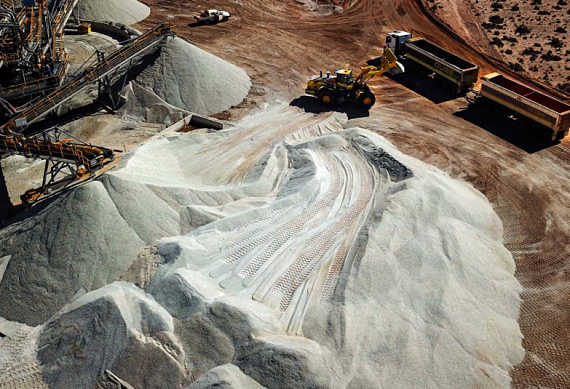 Teo Luan Boo is a shareholder of Alita.Disclaimer: I try to present as much facts as possible, but this write-up do include some of my opinions and may contain some unverified information. Please DYODD.
Teo Luan Boo is a shareholder of Alita.Disclaimer: I try to present as much facts as possible, but this write-up do include some of my opinions and may contain some unverified information. Please DYODD.
I got the following comment on my last blog post, asking for my thoughts. Instead of replying to the comment, I think it is better to do so with a new post.
|
“I enjoyed reading your post and insights on Alita Resources. I am also a shareholder of Alita and is concerned with the recent happenings leading to the current voluntary suspension. The continuous drop in share price ever since the capital raising of $0.20 with GXY & Jiangte is rather abnormal, and not to mention management commencing a strategic review only when things are falling apart, while awarding themselves with pay increment and performance shares. Am quite disappointed in how the way management are handling the affairs of the business. Would you mind sharing your thoughts on this?” |
In my humble opinion, the lithium sector is going through a very difficult time. The sector headwind is very strong with lithium spot prices going further south and that’s the key factor causing a lot of pain to upstream players in the EV supply chain (miners & chemical converters) while demand for electric vehicle & batteries remains strong and continues uptrending.
There’s a disconnect in the EV supply chain and many industry experts believe it is due mainly to the slow ramp up & bottleneck in readiness of the chemical converter plants.
With the latest Burwill announcement, it is now clear to me that the soft lithium market has claimed its first casualty and this is very very sad to me.
Burwill has been instrumental in helping Alita fast-tracked from being an explorer to a producer but it is also the same Burwill that had caused Alita much pain, by regularly delaying taking shipments. Of course, Burwill themselves were struggling too within this weak sector. However, I think the Burwill issue is inevitable, as they don’t really have any real value (as a “trader”) in the supply chain.
Alita management were fully aware of this “offtaker concentration” risk, but had not been able to react timely to mitigate this risk as the merger took a long 8 months (Apr-Dec 2018) with many “surprises” along the way.
As soon as the merger took place in Dec 2018, the management immediately revised the Burwill offtake agreement, removed the exclusive rights and free up ~50% of our targeted output for the market in an attempt to diversify our offtake base.
We wanted to avoid financially weak offtakers, sign up end-users of our spodumene and ideally non-Chinese, but the Koreans and Japaneses “enterprises” seemed to take forever to sign up.
On hindsight, we shouldn’t be surprised that it is not easy for a small company like Alita to push the large enterprises to move according to our timeline, especially within a weak lithium sector and uncertain global trade wars etc.
And due to the pushback of the remaining ~50% of our output, Alita has decided to temporarily hold back the plan to upgrade the DMS Fines Circuit to further expand the output.
This seems like a prudent approach for the company to conserve cash until we sign new offtakes to take up those additional slacks, but we are “suddenly” slap by our consortium of lenders led by Tribeca with a notice of default to the $40m loan facility.
I think one of those lenders had simply changed their mind and wanted out, jumping on the excuse that part of the loan was originally structured for DMS Fines Circuit & Tantalum upgrade. I do not have any official information on this, but this is what I guess has happened.
Now that Alita is in trading suspension pending the board to sort out the loan refinancing options and recapitalisation proposals, there are a few rumours flying around.
The Australia Financial Review wrote an article OCP Asia, Turnbull’s Keshik swoop on lithium play Alita Resources on hedge funds tipping in fresh funds with a $60m recapitalisation proposal.
Personally I am not into wild speculation based on rumours and conspiracy theories, which do not really serve much purposes during trading suspension.
While we are all eager to know more, we just have to wait for the official announcement before deciding what to do next.
What I find worrying is that there are people who read what’s posted online (with many ‘talking” with very limited real information & lots of assumptions / perspectives) and end up with sleepless nights worrying over someone’s wild guesses. Hence, I would urge people to think carefully before you post online.
 Alita produces spodumene from which lithium is extracted to produce batteries for electric vehicles. Photo: Company Alita produces spodumene from which lithium is extracted to produce batteries for electric vehicles. Photo: CompanyMy personal opinion is Alita will survive this ordeal. It is not a big debt and there’re multiple parties ready & keen to support a good company with a good quality product. Having said that, we have to be realistic. Our shareholding will get diluted and it will take Alita at least 6-12 months to get back on its feet. There’s alot of work to do to get back on track: new offtakes, downstream JVs, DMS upgrade, cost reduction, drilling etc. And this is a long game, we have to live to fight another day. |
Executive’s Remuneration
I hardly can comprehend people's “complaints” about executive remuneration (not picking out this particular reader’s comment but I see these ‘complaints’ every now and then, especially when the share price is depressed, people are frustrated and need to offload some hot air from their chests).
 Mark Calderwood, MD of Alita Resources during a 2018 meeting with shareholders in Singapore.
Mark Calderwood, MD of Alita Resources during a 2018 meeting with shareholders in Singapore.
NextInsight file photo.No company should underpay their executives if they want/need talent – typical case of 又要马儿跑 又要马儿不吃草 (can’t expect the horse to run without feeding it grass). You pay peanuts, you get monkeys!! Of course I understand that when you pay top dollars, it doesn’t necessary guarantee good executives. Then it is a performance issue, not salary issue. As shareholders, we get to vote the executive out for poor performance.
Now, I need to get this topic off my chest!!! Mark Calderwood’s remuneration is an non-issue to me. Before you jump on me, let me lay out a few “datapoints”.
Remuneration consists primarily of salary and performance shares (of course there are a few other components which will not be discussed here).
Salary
- Mark Calderwood’s salary was adjusted from 1st Jan 2019 (announced on 8th Apr 2019 MD Remuneration Review) to $602,250 following industry peer’s review of executive remuneration. Is that excessive? I don’t think so. A few related facts that might have you see the overall picture.
- After the merger in Dec 2018, Mark would be running a larger organization (Alliance + Tawana) than previous (Tawana only) and I feel that justify the review and adjustment.
- From Tawana’s 2017 Annual Report page 34, Mark Calderwood gets $308,316 for year 2017. Unable to get hold of official information of his salary in 2018.
- From Alliance 2018 Annual Report page 34, Tjandra Pramoko was given salary of $456,214 pa for 2018 as CEO (he was terminated on 1st Mar 2018) and Suen Sze Man (Executive Director) was given $456,214 for 2018 as Executive Director (she was terminated on 1st Mar 2018 but remains as the Non-Executive Director until 25th Jun 2018).
- From Appointment of Executive Director – Operations (14-Dec-2018) for the merged group, Mark Turner gets salary of $480,000 pa
- After the merger in Dec 2018, Mark would be running a larger organization (Alliance + Tawana) than previous (Tawana only) and I feel that justify the review and adjustment.
- In the latest Pilbara Minerals Annual Report 30-Jun-2019 page 24, we can see the executive remuneration of a peer. Pilbara CEO's salary is $600,000 while the CFO, General Counsel & COO salary is $450,000. So IMO Alita CEO salary is on par with our peers. I know some people judge those salaries against their own and feel that $600,000 is “excessive”. Let’s first agree that $600,000 salary is fair for the Alita CEO role, regardless of who plays that role, Mark Calderwood or Mr A or Mr B or Mr C.
- Separately, it is a different matter if shareholders feel that Mark Calderwood’s performance is not up-to-the-mark (pun not intended) as CEO. Some judge based on the share price but realistically, executives are paid based for business performance in the mid/long run and not directly based on short-term share price. And if the majority of shareholders think he’s not fit for the role, you have your voice.
Personally, I think Mark Calderwood had made a few critical right moves, such as revising the Burwill offtake agreement immediately after merger to free up 50% of our output, working on the Korean & Japanese offtakes to try & diversify our offtakers base, working on going downstream thru JV. But some things are beyond his control such as the speed/urgency of the other parties & the challenging market conditions (declining lithium prices), which are working against everyone not just Alita.
Performance Shares
IMO, a decent amount of performance shares is good to ensure that the executives work hard for them. Shareholders had been asked to vote for the performance rights for Mark Calderwood (and Mark Turner) during 11th July 2019 EGM. I believe many don’t go into the details but the real stuff lies in the details. Refer to Notice of EGM page 15-17 and Issue of Performance Rights & Options.
Let me attempt to summarise key points for you.
- 50% of the Performance Rights are subject to a relative Total Shareholder Return (TSR) performance condition against a peer group on a sliding scale (50-75 percentile, 75-100 percentile). He will not get the performance rights if his performance is below 50 percentile. What is there to complain about when the boss incentive is aligned to us (shareholder returns)?
- 50% of the Performance Rights are subject to them remaining employed in Alita. What is the concern in incentive to retain the services of these executives? Again, if these executives are not delivering, it will be a performance issue rather than incentive issue.
- In the latest Pilbara Minerals Annual Report 30-Jun-2019 page 25, Pilbara CEO’s variable remuneration was $698,882 (on top of the $600,000 salary) awarded in combination of cash & shares (Note: the original plan remuneration was higher than that – some of the targets were not fully achieved). Comparatively, Mark Calderwood will be entitled to (ie planned) performance rights up to $361,250 in shares. If the share price drops further, Mark would end up with less for his variable remuneration, even if he still gets some shares for not delivering shareholder returns.
- As for Mark Turner (Executive Director – Operations), he will be issued unlisted 9,000,000 options over the next 3 years – in which he can only benefit if the share price is above 31.48c (exercise price) – many shareholders will be very happy if the SP returns to above 31.48c
- Performance shares are ultimately approved by shareholders. If majority of shareholders don’t think it is an issue approving these incentives, minority shareholders has to just accept it or move on (and it’s like this everywhere unless you are a big shark). That’s how democratic society and system works – majority rules!
Thanks for reading so far… Happy weekend…
This article is republished with permission from Teo Luan Boo's blog.


